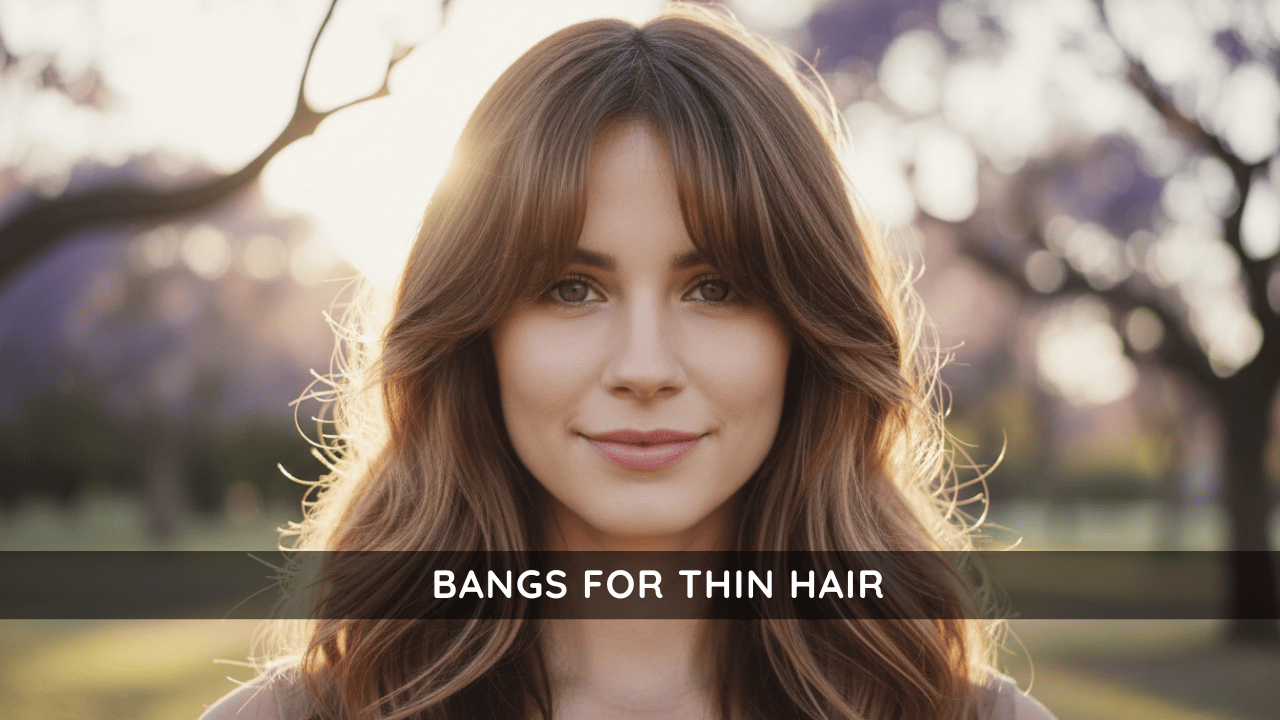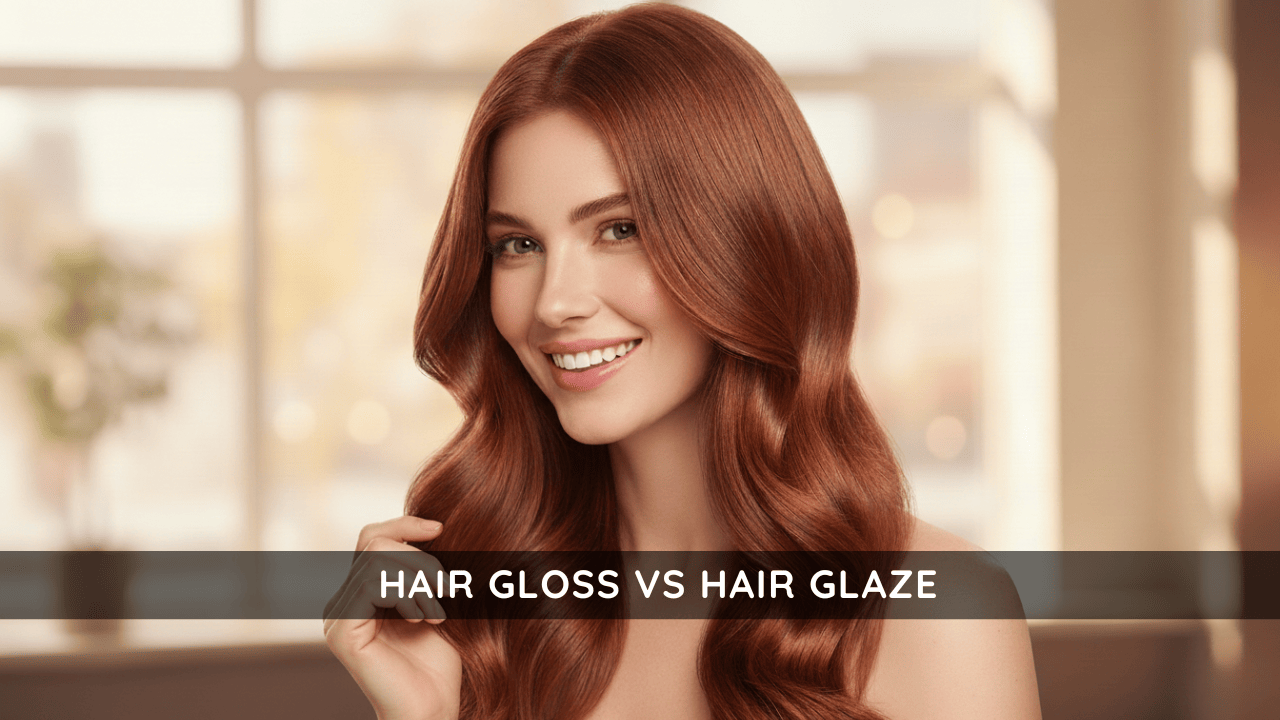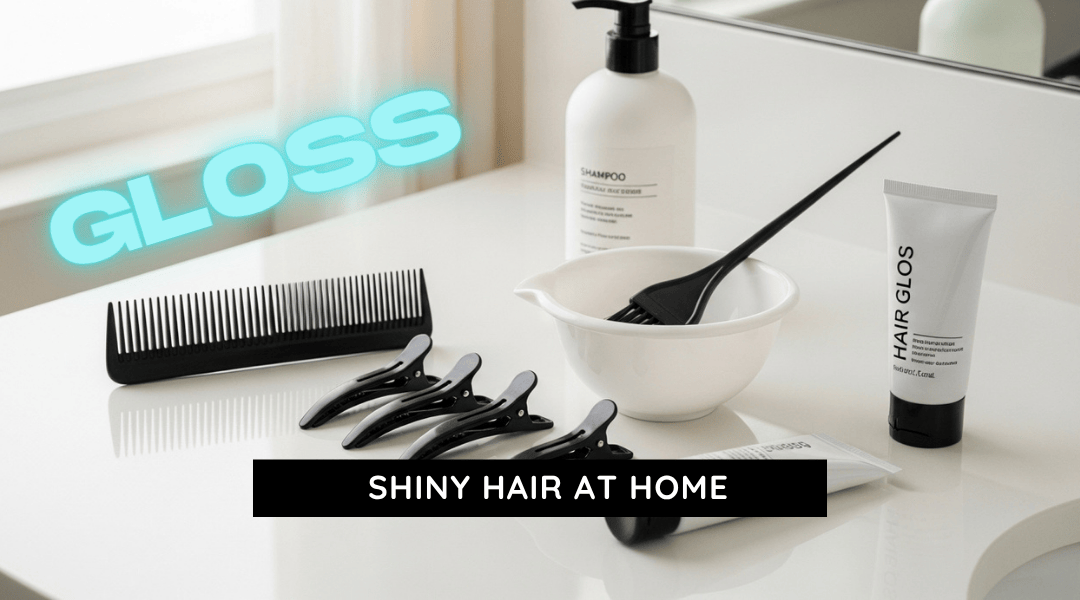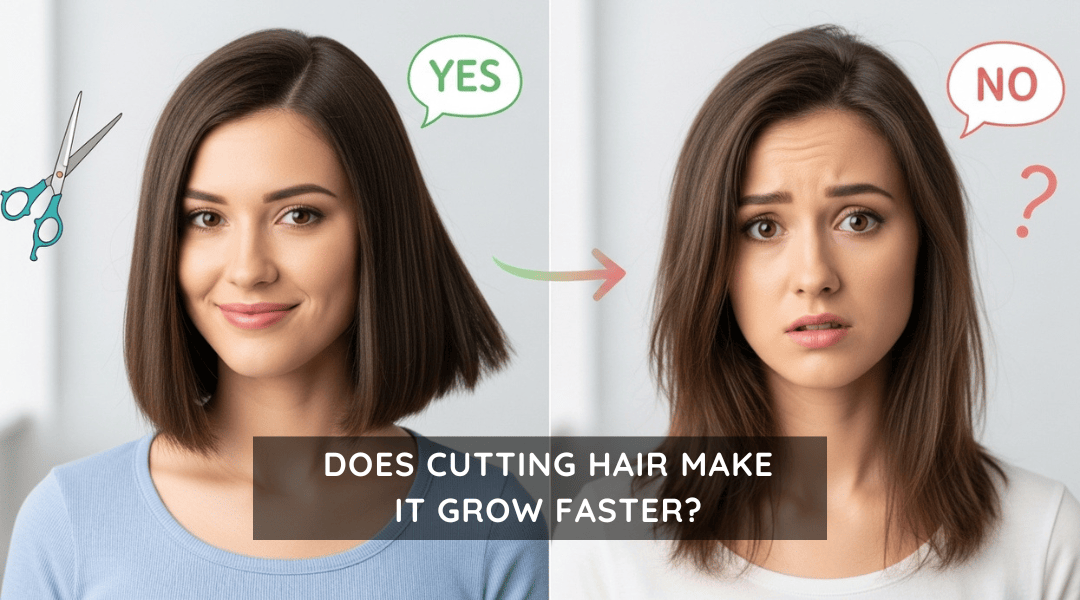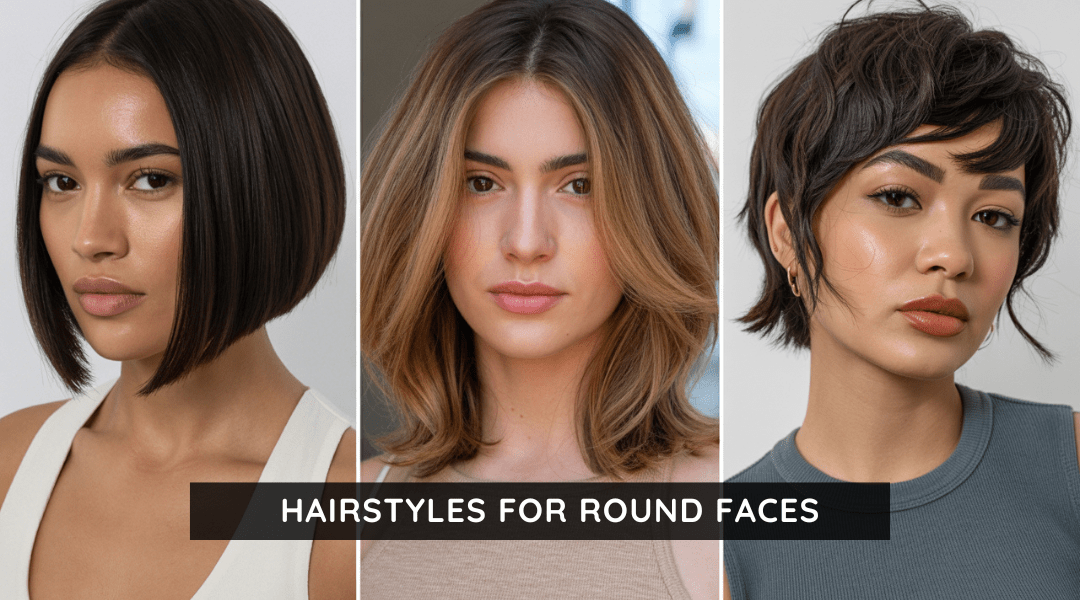Hair Gloss Treatment: Salon vs At-Home – The Complete Guide
- Written by: Riley Lane
- Reviewed by: Riley Lane
- Updated: October 3, 2025
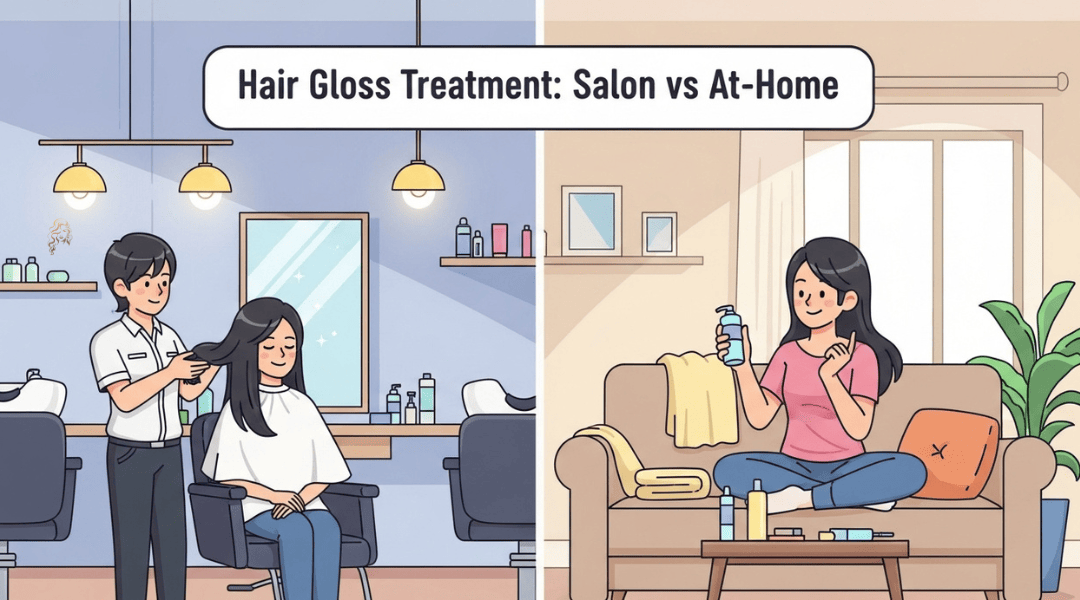
Gloss is having a moment, and for good reason. It’s the fast way to add mirror-like shine, soften frizz, and gently refine tone without committing to a full color service. But here’s the sticking point: should you book an in-salon gloss or reach for an at-home kit? If you’ve read a few listicles, you’ve probably seen the same vague promises and conflicting answers.
This guide cuts through the noise using only vetted sources and real-world experiences from stylists, beauty editors, and community threads. You’ll see what a gloss actually is (and how it differs from glaze, toner, and so-called “lamellar gloss”), what results you can expect, the real longevity and cost math, and the risks that matter, including dryness reports from DIY users and patch-test guidance for sensitive scalps. You’ll also get a side-by-side comparison, a decision framework, maintenance calendars, myth-busting, and FAQs drawn directly from the experts.
By the end, you’ll know whether a professional, customized gloss at Salon 1150 or an at-home option fits your hair, your timeline, and your budget, backed by citations throughout.
What Is a Hair Gloss (vs Glaze, Rinse, or Toner)?
A hair gloss is a semi-/demi-permanent color treatment designed to enhance tone and shine. In salon settings, gloss is typically a demi-permanent formula, and often uses a developer for longer-lasting results. That extra control and processing step is one reason pro results generally wear longer.
A glaze, by contrast, is usually ammonia-free and sits more on the surface; many glazes are marketed as purely shine-enhancing with minimal tone shift. Industry explainers note that glosses “tend to feature a small amount of ammonia,” while glazes are non-ammonia surface coats, another reason glosses last longer.
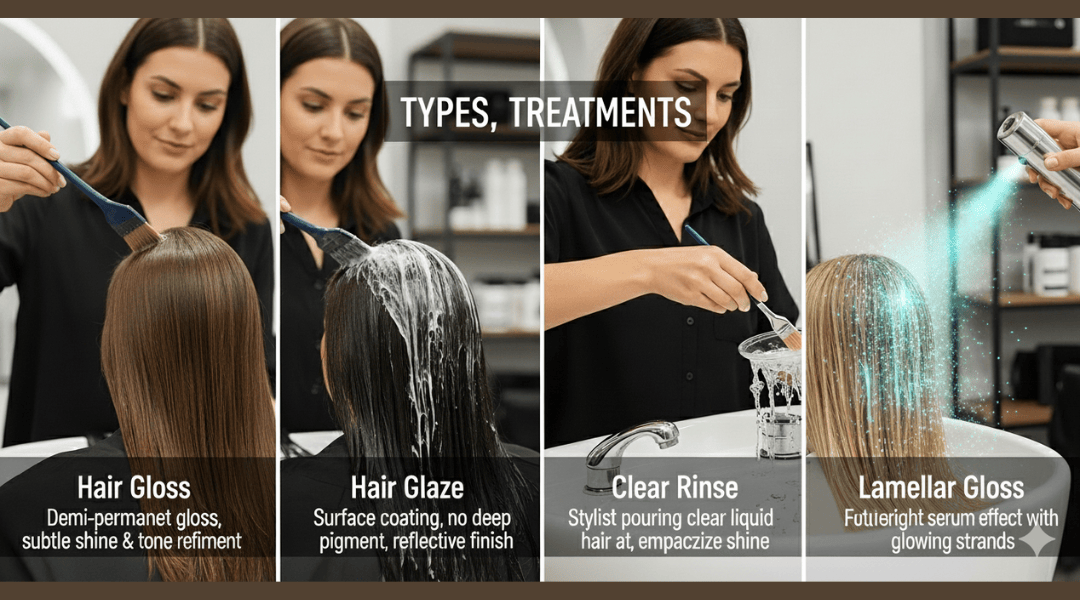
You’ll also hear “clear rinse” used interchangeably with clear gloss in community forums, reflecting how non-tinted glosses are described by clients and some stylists.
Finally, there’s lamellar “gloss”, a trend term for ultra-light, conditioning shine treatments. These aim to leave hair “illuminated” and non-damaging, but they’re not the same as a demi-permanent salon gloss. Use them as shine boosters, not as direct substitutes for tonal correction.
Why gloss looks shiny: multiple sources (including HaircareScience discussions) stress that gloss results are pH-dependent: shifting hair to a slightly acidic pH helps the cuticle lie flatter, which boosts light reflection.
What Results Can You Expect?
Doable with gloss (when well matched):
- Shine & soft feel. Users report immediate shine and softness, even from affordable systems when used together.
- Toning brassiness or adding subtle depth. Particularly for blondes and brunettes who need gentle refinement between color appointments.
- Surface smoothness and frizz appearance. Gentle, conditioning formulas can reduce roughness without the commitment of permanent color.
Not doable with gloss (set expectations):
- No level lift and no structure repair, a gloss can seal the cuticle for a smoother look, but it does not repair split ends.
- Gray coverage is limited. Some glosses can camouflage or blend gray; they’re not a full-coverage solution for resistant gray.
Longevity (realistic ranges):
- Salon gloss: about 4–6 weeks with proper care.
- At-home gloss: around 2–4 weeks, varying by product, porosity, and wash frequency.
Salon vs At-Home, Side-by-Side Comparison
| Factor | In-Salon Gloss | At-Home Gloss |
|---|---|---|
| Diagnosis & Customization | Professional, custom-mixed and pH-balanced for your color and shine goals; developer often used for durability. | One-size-fits-all presets; limited undertone targeting; requires careful shade choice and strand testing. |
| Longevity | Commonly 4–6 weeks. | Commonly ~4 weeks or 2–4 weeks, depending on hair and aftercare. |
| Cost (typical) | $50–$100 reported by consumer press; some services run higher depending on market. | ~$30–$35 for popular kits/systems, with community reports of strong shine when used as a set. |
| Tone Control | Strong, custom pigments and timing reduce “hot roots” or muddy ends risk. | Variable, DIY control is limited; mis-matches can lead to unwanted warmth or dulling. |
| Convenience | One appointment, pro application, and finish. | At your sink and schedule; minimal setup. |
| Risk & Safety | Generally gentler than permanent dye; still perform patch tests for sensitivities. | DIY errors (over-toning, uneven deposit, dryness with frequent use) are the main risks. |
Bottom line: salon gloss wins on customization, consistency, and wear; at-home wins on cost and convenience, best for clear shine boosts and careful, informed use.
Who Benefits Most From Each Option
Color-treated blondes & brunettes (brass control): Gloss is a smart way to tone brassiness and add subtle depth between color services gently. Pro mixes help lock in the exact undertone you want; DIY can work if you choose the right tone and strand test first.
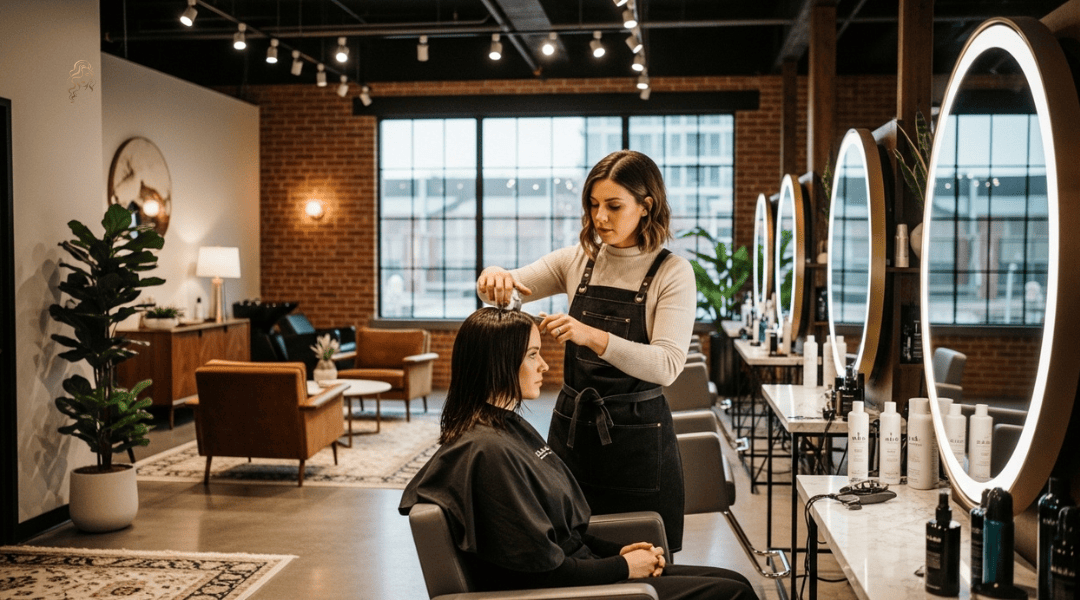
Virgin hair (no color history): Clear glosses can work “beautifully” on virgin hair, an easy shine-only upgrade when you don’t need pigment.
Sensitive scalp: Many glosses are ammonia-free, and stylists often recommend them as a gentler option, still do a patch test, especially if you’ve reacted before. If you’re pregnant, discuss ammonia- and peroxide-free approaches with your stylist and healthcare provider.
Afro/curly/relaxed hair: Forum users report success with clear DIY gloss for shine on 3b/c curls, sometimes spacing applications to about every three months. Others warn that frequent DIY glossing eventually feels drying or “blocked moisture.” Translation: proceed, but space applications and monitor feel.
Risks and Safety Concerns
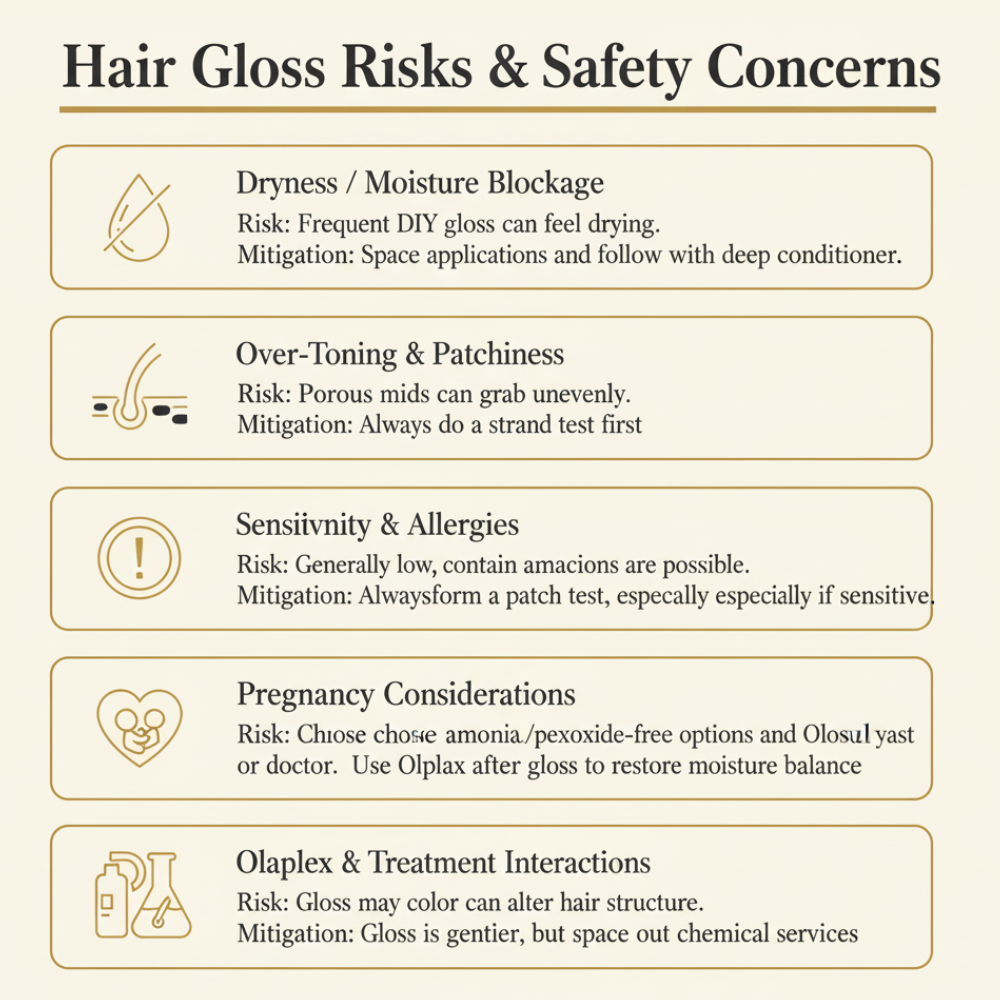
- Dryness / “moisture blockage” with frequent DIY: Multiple forum anecdotes describe dryness after repeated at-home clear glosses. Mitigation: space applications and follow with a nourishing conditioner or mask.
- Over-toning & patchiness on porous mids: Community threads flag uneven results if tone or timing is off. Strand testing helps; pro-mixed undertones are more forgiving.
- Sensitivity & allergies: Gloss is generally low-risk and often ammonia-free, but patch tests are still recommended, especially for sensitive scalps.
- Pregnancy considerations: If coloring while pregnant, discuss ammonia-/peroxide-free routes and ingredient choices with your stylist and medical provider.
- Interaction with treatments (e.g., Olaplex): A HaircareScience thread suggests that a gloss doesn’t make Olaplex No.3 less effective, and doing Olaplex after gloss may help with minor dryness, community-level evidence, not medical advice.
- General chemical stress context: Broad research on chemical services notes structural changes from oxidative color/perm; that’s background risk context, not a gloss-specific indictment.
Heat note: Some forum users add gentle heat (plastic cap, 15–20 minutes) to boost shine with at-home products. If you try this, do so conservatively and only on healthy hair.
Hair Gloss Myths and Facts
Quick, scannable truths for salon and at-home hair gloss decisions.
-
Myth
“Gloss repairs split ends.”
FactA gloss seals the cuticle for a smoother look; it does not repair split ends.
-
Myth
“Gloss equals glaze.”
FactGlazes are typically ammonia-free and sit on the surface; glosses can use small amounts of ammonia or a developer and usually last longer.
-
Myth
“Salon gloss is damaging.”
FactStylists often recommend gloss as a gentler option compared with traditional dye processes.
-
Myth
“Gloss lasts months.”
FactPlan for about 4 to 6 weeks with a salon gloss and 2 to 4 weeks for at-home options.
-
Myth
“Gloss fully covers gray.”
FactA gloss can camouflage or blend some gray; it is not full coverage for resistant strands.
Maintenance & Aftercare (28–42 Day Plan)
The short version: use color-safe products, pace your washes, and refresh strategically.
Weeks 1–2 (post-gloss):
- Wash with color-safe formulas; keep styling heat moderate.
- Enjoy the shine window; if you’re DIY-only, resist the urge to re-gloss early.
Weeks 3–4:
- If you chose at-home gloss, consider a clear refresh now (strand test first if you’re tone-adjusting).
- If you’re a salon client, ride the results, most see 4–6 weeks of wear.
Weeks 5–6:
- Book your next salon gloss or plan your DIY session.
- For DIY users, some community members recommend clarifying before application to remove buildup (always follow with conditioner).
Mini-calendars by profile (guidance, not medical advice):
- Highlighted blonde / brass-prone: Salon gloss every 4–6 weeks; optional at-home tone tweak between visits.
- Single-process brunette: Salon gloss for richness every 4–6 weeks; DIY clear for extra shine if needed.
- Reds/vivids: Consider more frequent refresh to keep saturation (DIY clear between pro visits).
- Virgin hair (shine-only): Clear DIY glosses work well; space them and monitor feel.
Schema note: This section maps cleanly to a HowTo block (steps, supplies, timing).
FAQs
How long does hair gloss last?
Salon gloss typically lasts about 4 to 6 weeks, while at-home gloss often holds for 2 to 4 weeks. Longevity depends on hair porosity and wash routine, so using color-safe products and spacing washes helps a hair gloss treatment keep its shine longer.
Is gloss safe for sensitive scalps?
Yes. Most gloss formulas are gentle and often ammonia-free, but always patch test first. If you’re sensitive or pregnant, choose ammonia- or peroxide-free options and review ingredients with your stylist before any salon gloss or at-home gloss.
Does hair gloss cover gray?
Not fully. Hair gloss blends or camouflages some gray rather than providing complete coverage. For resistant gray you’ll need a different color service; gloss is best for shine and subtle tone refinement.
Is hair gloss the same as toner?
No. A salon gloss is typically a demi-permanent color service that adds shine and refines tone, while toner is a broader category of tone-adjusting products. Many salon glosses function like toners with added conditioning and shine, and at-home gloss options are usually less customizable.
Can I gloss over virgin hair?
Yes. A clear at-home gloss or professional clear salon gloss can boost shine on virgin hair. Do a strand test first and follow label timing to keep results even and natural.
Should You Gloss at Home or in a Salon?
Use these checkpoints to choose the right path for shine, tone control, longevity, and safety. (Citations appear elsewhere on the page.)
| Checkpoint | If this is you… | Recommendation |
|---|---|---|
| Goal | Shine-only on virgin hair | At-Home Clear at-home gloss; do a strand test first. |
| Goal | Need tone correction for brassiness |
In-Salon
Prefer a professional gloss for pigment control.
At-Home Possible with careful shade selection and a strand test. |
| Longevity | Want results closer to 4–6 weeks | In-Salon Choose a salon gloss for longer typical wear. |
| Sensitivity / Pregnancy | Sensitive scalp or pregnancy considerations | Use ammonia-/peroxide-free options and patch test; consult if pregnant. |
| Budget & Time | Lower up-front cost & convenience are key | At-Home DIY ≈ $30–$35 — weigh cost per week vs In-Salon $50–$100. |
| Texture / History | Afro/curly/relaxed; mixed DIY reports | At-Home Clear gloss can add shine — space applications; some users report dryness with frequent use. |
Should you gloss at home or in a salon? Use these dataset-backed checkpoints.
Goal
- If you want shine-only on virgin hair, a clear at-home gloss fits the brief. Do a strand test first to confirm feel and finish. This is supported by expert explainers that note clear gloss can work “beautifully” on virgin hair. (Source: Byrdie)
- If you need tone correction for brassiness, a salon gloss offers better pigment control and consistency. DIY can work if you select shade carefully and test first, but professional mixes and processing give an edge for undertone precision. (Sources: Byrdie; Hair.com; L’Oréal Paris)
Longevity needs
- If you want results closer to the 4–6 week mark, pick an in-salon gloss. Consumer press and brand education put salon wear around 4–6 weeks, while at-home options commonly sit in the 2–4 week range depending on porosity and wash frequency. (Source: InStyle)
Sensitivity or pregnancy
- If you have a sensitive scalp or you are pregnant, stick to ammonia- or peroxide-free options and patch test in advance. For pregnancy-related decisions, consult a clinician and discuss specific ingredients with your stylist.
Budget and time
- If you need a lower up-front cost and maximum convenience, DIY makes sense. Typical pricing in the dataset: salon gloss about $50–$100, at-home around $30–$35. Compare cost per week of wear, not just ticket price.
Texture and history
- For afro, curly, or relaxed hair, DIY clear gloss can deliver shine. Community threads also report dryness when DIY is repeated too often, so space applications and monitor feel.
Quick wrap-up
- Salon gloss wins when you need custom undertone control and longer wear.
- At-home gloss wins for shine-only goals, lower cost, and convenience, provided you strand test and pace applications.


